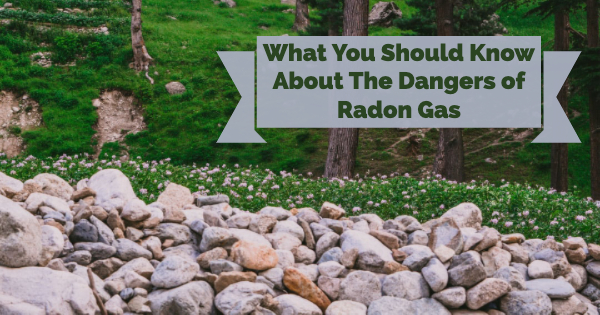According to the Surgeon General, radon is the second leading cause of lung cancer in the United States, after smoking. You can’t smell it, see it, or touch it, but it can be very dangerous if it’s found in your home.
What is Radon?
Radon is a radioactive gas that is natural in the earth. It’s been found it in rock, soil, and water, and it’s what’s left after the breakdown of uranium. After uranium is broken down, radon gas is released into the air. It can then build up, or contaminate water and soil, causing critical long term health conditions in high concentrations.
Sometimes radon gas will be concentrated inside homes that have been built on soil with natural uranium deposits. When this is the case, radon enters the home through cracks in the walls and floors or through gaps left by construction work or around service pipes and electrical wires.
Why is Radon Gas Dangerous?
When radon gas is taken into the body, the lungs become exposed to radiation. Experts say that, in small quantities, this radiation exposure is harmless. However, in larger quantities or with continued exposure over time, radon can cause damage to the cells in the lining of the lungs. This increases a person’s chance of getting lung cancer.
Unfortunately, because radon is naturally occurring and present in the air, there’s no way to prevent it entirely. However, high concentrations of radon inside a home can be dealt with thanks to radon mitigation companies.
As mentioned already, radon gas is the second leading cause of lung cancer in the United States, with smoking holding first place. Being exposed to radon gas and cigarette smoke together causes a much greater risk of lung cancer than being exposed to either factor by itself. This is why most radon-related cancer deaths involve smokers. However, many radon-related deaths involve people who never smoke. Since radon is so difficult to recognize in one’s environment, people are often surprised when they develop lung cancer with no history of smoking. They have no idea that the culprit is inside their own home.
How Do I Find Out if Radon is in My Home?
Testing is the only way to find out how much radon is inside your home, school, office, or water supply. There is short-term and long-term testing available and you can conduct the tests yourself with some basic equipment.
Depending on what device you use, short-term radon testing can operate over the course of two days or three months. The testing device will measure the amount of radon in the air during that period. Long-term tests take place over three months to one year.
When you set up a radon test, you will want to put the testing device into the lowest livable part of your home — a place that you or someone in your family spends at least eight hours per week in. You will want to keep doors and windows closed as much as possible throughout the duration of the test.
Since radon levels will vary from one day to the next, it’s usually recommended to get long-term testing. This will provide you with a more accurate idea of your average radon exposure.
If the radon test results show you have high amounts of radon inside your home, radon mitigation companies can take action to bring your home’s radon level back down to a safe level.
This is everything you need to know about the dangers of radon and how to find out if you should hire radon mitigation companies to make your home safer.


Recent Comments